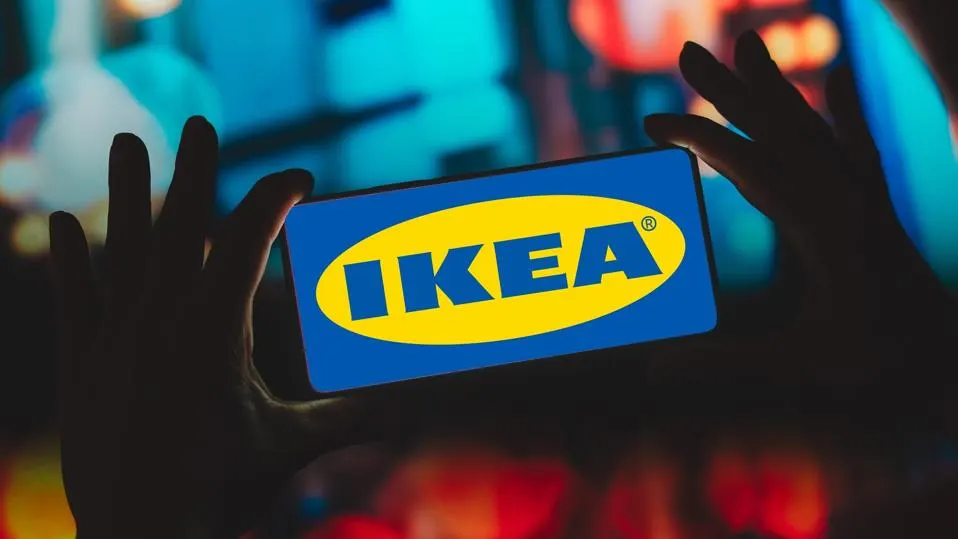The 10 Best Examples Of The Metaverse Everyone Should Know About
23 May 2022
The metaverse – everyone is talking about it, but no one is exactly sure what it actually is. This makes it a bit difficult if we want to put together a list of platforms or experiences that represent the best of what it could be.

But if we take it to mean persistent, connected digital environments which focus on providing immersive experiences for users, we can have a go at highlighting some projects – existing and on the horizon - which stand out.
Not all of the projects highlighted here involve virtual reality, or decentralization, or cryptocurrency. Although those are all technologies that are likely to have a place in the metaverse, it isn’t strictly essential that they are part of every metaverse.
So rather than focusing on examples that tick all of the boxes, today’s best examples tend to be those that do one or more of the core elements particularly well. Not all of these are fully functional yet (and one of them isn’t even real!) but they all give us a glimpse of what the digital worlds of the future might look like.
Ready Player One
Ok, so this is a bit of a cheat because it doesn't exist and is entirely fictional, and if you've seen the movie or read the book, you will know that isn't necessarily an entirely bad thing. It does, however, serve as a great example of what the metaverse might eventually end up looking like – although hopefully, we won't primarily use it as a means of escape from an awful reality.
Ready Player One shows us what a fully immersive and interactive virtual reality world could look like in the near future. And although it’s pure science fiction, it isn’t necessarily that far out – a 2020 survey by Ericsson found that seven out of 10 people believe we will have VR worlds that are indistinguishable from reality by 2030. And while yes, it is often referred to as dystopian, it’s not as terrible a potential fate for humanity as some other fictional digital realities we could mention.
Second Life
Second Life was created by Linden Labs back in 2003, before Facebook (let alone Meta) even existed. There is some debate around whether it constitutes a metaverse as such. One reason for this is that, as the name suggests, it’s built to allow users to engage in an alternative life as an alter-ego rather than to take their existing real-world life online. Other opinions, however, state that it was effectively the first popular online metaverse environment. While it may not tick every box on the checklist, it serves as a useful example of an online community populated by millions of users with an immersive, experiential user interface.
Meta Horizons (Facebook)
When Facebook founder Mark Zuckerberg renamed his company to Meta, it was a sign of how important he felt the metaverse concept would be to the future of digital communications, socializing, and living. So far, the result has been several projects, including Horizon Worlds (a virtual worlds platform), Horizon Venues (events platform), and Horizon Workrooms (virtual office). All of these platforms are interconnected and allow users to create avatars that represent them as they explore and interact with other users. One interesting aspect that arises from the existence of Horizon is that it forces us to confront questions about whether we want a metaverse where ownership is centralized under a corporate owner or a more distributed, decentralized model of ownership and governance.
Fortnite
Fortnite is, of course, primarily known as one of the most successful online games ever created. But creators Epic Games quickly came to understand that once they had brought millions of switched-on, tech-savvy gamers together on their platform, it potentially became something more game-changing. Two main strands that are being followed in order to turn the world of Fortnite into a proper metaverse are live music concerts from global superstars such as Travis Scott, Ariana Grande, and Billie Eilish. Brands including Telco 02, broadcaster ITV and supermarket Carrefour have all used the creative mode to take their first steps into the metaverse.
Decentraland
Something of a cross between a game, a marketing channel, and an experiment in creating a digital, decentralized democracy, Decentraland is a true web3 platform. It’s governed by a Decentralized Autonomous Organization (DAO) and is an online home to some of the world’s biggest superstars and brands, including Morgan Stanley, Coca-Cola, Adidas, Samsung, and Snoop Dogg. It comes with its own cryptocurrency, known as MANA, and anyone interested in buying a plot of land there will currently need to put up at least $10,000 - with the most expensive costing well over $1 million.
Nvidia Omniverse
Omniverse is Nvidia’s attempt to build a creative metaverse platform for 3D design professionals. It builds on technology developed by animation studio Pixar, which created the Universal Scene Description (USD) language that enables 3D objects and environments to become portable across different toolsets. This allows, for example, characters to be designed collaboratively, with facial animators, clothing designers, and other creatives all using tools that they are familiar with. As 3D environments become increasingly more detailed and immersive and require more work to build, this kind of creative framework will become an essential tool for studios creating metaverse content.
Roblox
Roblox is a gaming platform used daily by more than 50 million users. It lets anyone create and even monetize their own game worlds, which all exist within an interconnected metaverse and share aspects like avatars and currency. Skewed at a younger audience than some of the other platforms mentioned here, companies including Nike, Forever 21, Gucci, Nascar, Ralph Lauren, and Vans have all used the platform to set up virtual worlds where users can interact with their brands. While anyone can create their own game within Roblox, it's designed, so they will all have a similar look and feel, meaning that once a player has logged in and experienced one of them, they will feel comfortable in any of them.
The Sandbox
This started out as a mobile game, which in 2018 was ported by its creators to the Ethereum blockchain, becoming one of the first truly decentralized metaverse platforms. It includes its own object creation tools that allow anyone to build 3D items, characters, vehicles, or anything else they can think of, which are then minted as NFTs, and can be imported into other Sandbox worlds. These NFTs can also be traded and sold via the platform’s built-in marketplace. Assets and land are created as NFTs, and like Decentraland, transactions are carried out in the platform’s own currency, known as SAND. Sandbox is another platform that has proven popular with brands wanting to establish their metaverse presence – landowners include HSBC, Warner Music, PwC, and Paris Hilton.
Otherside
This one has only just been announced, and not many details are known, but it is a metaverse project put together by Yuga Labs – creators of the immensely successful Bored Ape Yacht Club (BAYC) series of NFTs. In April, the company raised $285 million with the sale of the first batch of “deeds” to land on the platform. Although details of what Otherside will look like when it opens to the public are scarce, the developers state, "think of it as a metaRPG (role-playing game) where the players own the world, your NFTs can become playable characters, and thousands can play together in real-time."
Pokemon Go
Pokemon Go launched before the hype intensified around the metaverse concept. However, it's the go-to "killer app" for augmented reality (AR), which is predicted to be one of the cornerstone technologies that metaverse will be built around. As such, it’s one of the best examples of how metaverse will involve the merging of the real and digital worlds. Its creator Nintendo further blurred the boundaries by allowing real-world businesses to establish a digital presence within the poke-verse by launching advertising and promotional campaigns.
Related Articles
Responsible AI: Why Privacy Is An Essential Element
Today, people often talk about “responsible” AI use, but what do they really mean?[...]
The Amazing Ways IKEA Is Using Generative AI
Global furniture retailer IKEA has long been at the forefront of tech-driven retail innovation.[...]
Generative AI Is Coming To Your Home Appliances
Across all industries, organizations are rapidly embracing generative AI. Among them, makers of home appliances like fridges and ovens.[...]
Generative AI And The Risk Of Inbreeding
We all understand the concept of inbreeding in human terms – where people who are too genetically similar reproduce, resulting in offspring with deformities.[...]
How Generative AI Will Change The Jobs Of HR Professionals
HR is fundamentally about managing humans – so how will the job change in a future where powerful generative AI tools are everywhere?[...]
Amazon Harnesses Generative AI For Seamless Palm Recognition Shopping Experience
Generative AI may have made headlines for its ability to write text and create art, but its uses extend beyond simply generating content.[...]
Sign up to Stay in Touch!
Bernard Marr is a world-renowned futurist, influencer and thought leader in the fields of business and technology, with a passion for using technology for the good of humanity.
He is a best-selling author of over 20 books, writes a regular column for Forbes and advises and coaches many of the world’s best-known organisations.
He has a combined following of 4 million people across his social media channels and newsletters and was ranked by LinkedIn as one of the top 5 business influencers in the world.
Bernard’s latest book is ‘Generative AI in Practice’.










Social Media